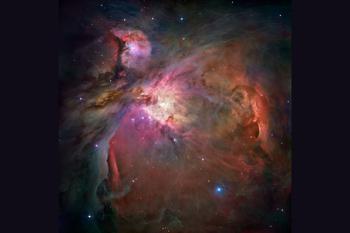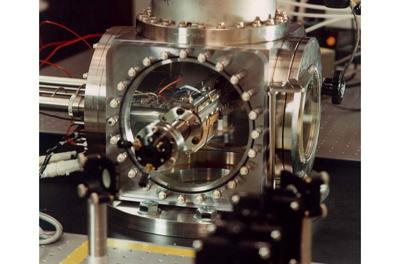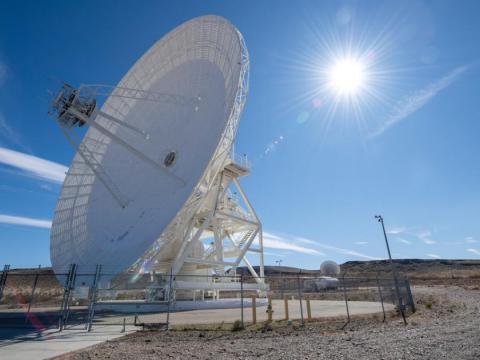NASA Explores Making Planets Right Here On Earth
NASA scientists at Ames Research Center in Moffett Field, California, reproduced the processes that occur in the atmosphere of a red giant star and lead to the formation of planet-forming interstellar dust.
NASA scientists at Ames Research Center in Moffett Field, California, reproduced the processes that occur in the atmosphere of a red giant star and lead to the formation of planet-forming interstellar dust.
At Ames, scientists use a specialized facility called the Cosmic Simulation Chamber (COSmIC) to recreate and study dust grains similar to those that form in the outer layers of dying stars. The research can help them understand the composition and evolution of the universe and creation of planets, to include Earth-like planets, according to a news statement.
"The harsh conditions of space are extremely difficult to reproduce in the laboratory and have long hindered efforts to interpret and analyze observations from space," Farid Salama, project leader and a space science researcher at Ames, says. "Using the COSmIC simulator, we can now discover clues to questions about the composition and the evolution of the universe, both major objectives of NASA's space research program."
After a life cycle spanning millions of years, dust grains can lead to the formation of planets. Until the COSmIC, scientists could not simulate space conditions in a gaseous state, and because conditions in space are vastly different from those on Earth, it is challenging to identify extraterrestrial materials. COSmIC's chamber recreates extreme conditions of space where interstellar molecules and ions float in a vacuum at densities that are billionths of Earth’s atmosphere, and average temperatures can be less than -270 degrees Fahrenheit.
"This type of new research truly pushes the frontiers of science toward new horizons and illustrates NASA's important contribution to science," says Cesar Contreras of the Bay Area Environmental Research (BAER) Institute and a research fellow at Ames. Scientists' work is funded through the Laboratory Astrophysics Carbon-in-the-Galaxy consortium program, an element of the Astrophysics Division's Astrophysics Research and Analysis program in NASA's Science Mission Directorate at NASA Headquarters in Washington, D.C.





